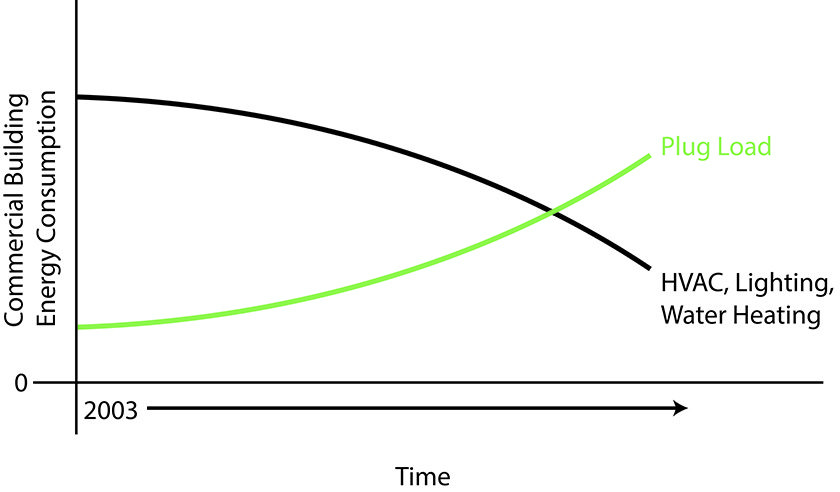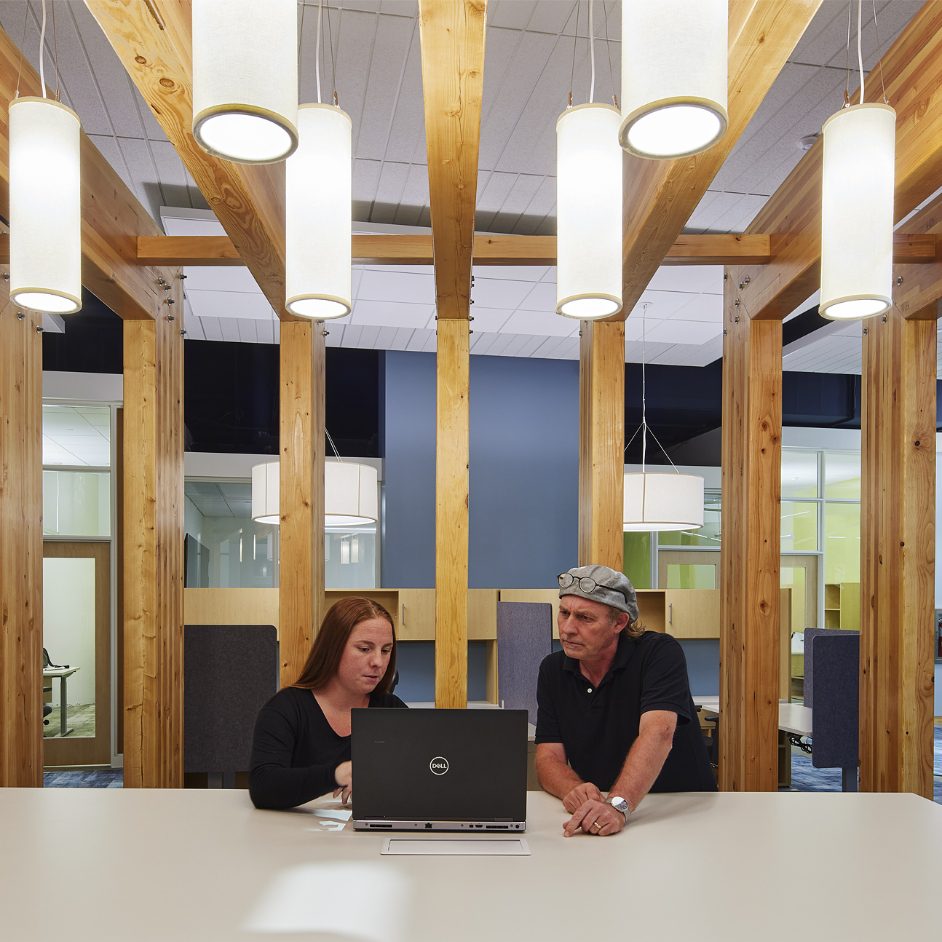
In late 2010, I was reviewing a set of predicted energy models for a project at LHB, ranging from a better-than-code to a SB 2030 (60% better than “average”) solution and noticed something unusual. The energy usage included in each scenario for “plug load” was the same, and because the options became progressively more efficient, the percentage of plug load went up.

I happened to be in the U of M College of Design MS in Sustainable Design program at the time and had the opportunity to work with Billy Weber from the Center for Sustainable Building Research (CSBR) on a Directed Study of my choice on the topic of plug load. Plug load, or Miscellaneous Equipment Loads (MEL’s), are not easy to define. For our purposes we will use the following definition: All energy consumed on-site that is not related to central heating, cooling, ventilating, plumbing (including hot water), and lighting. All other loads, including equipment, anything that is literally plugged in, process, mechanized transportation, or other miscellaneous loads.
The main theory that emerged from this study was: the primary end-uses of an average office building’s energy consumption is decreasing over time, while plug load end-use is seeing growth in energy consumption and is projected to continue to increase. Based on this pattern, much of the gain in energy efficiency in HVAC, lighting and water heating is being wiped out by the increased consumption of plug loads. Our B3/SB 2030 team for the state of Minnesota was given the opportunity in 2012 to test this theory using case studies from our database and reached similar conclusions.

In 2013, LHB, CEE and Seventhwave successfully applied to our MN Department of Commerce (DOC) for a Conservation Applied Research and Development (CARD) grant to study plug loads in office buildings in Minnesota. We noted an opportunity to build on the plug load research done in the last five years. Through a study of over 60 offices in Minnesota, our team established that plug load energy use in commercial buildings represents a relatively untapped energy savings resource and these loads are increasing, especially in contrast to other end uses.
Our team has now completed a field research study to demonstrate and measure the savings from potential plug load reduction strategies in office buildings, characterized the types of devices and baseline usage, and documented occupant acceptance, operational issues, and cost-effectiveness of reduction strategies. The long-term goal is for this information to be used by utilities and policy makers, including increasing the impact of these strategies in Conservation Improvement Programs (CIPs) in Minnesota. A copy of the final report submitted to the Department of Commerce can be found here.

Learn more about the CARD grant Plug Load Reduction Study by watching our webinar. Register here.


